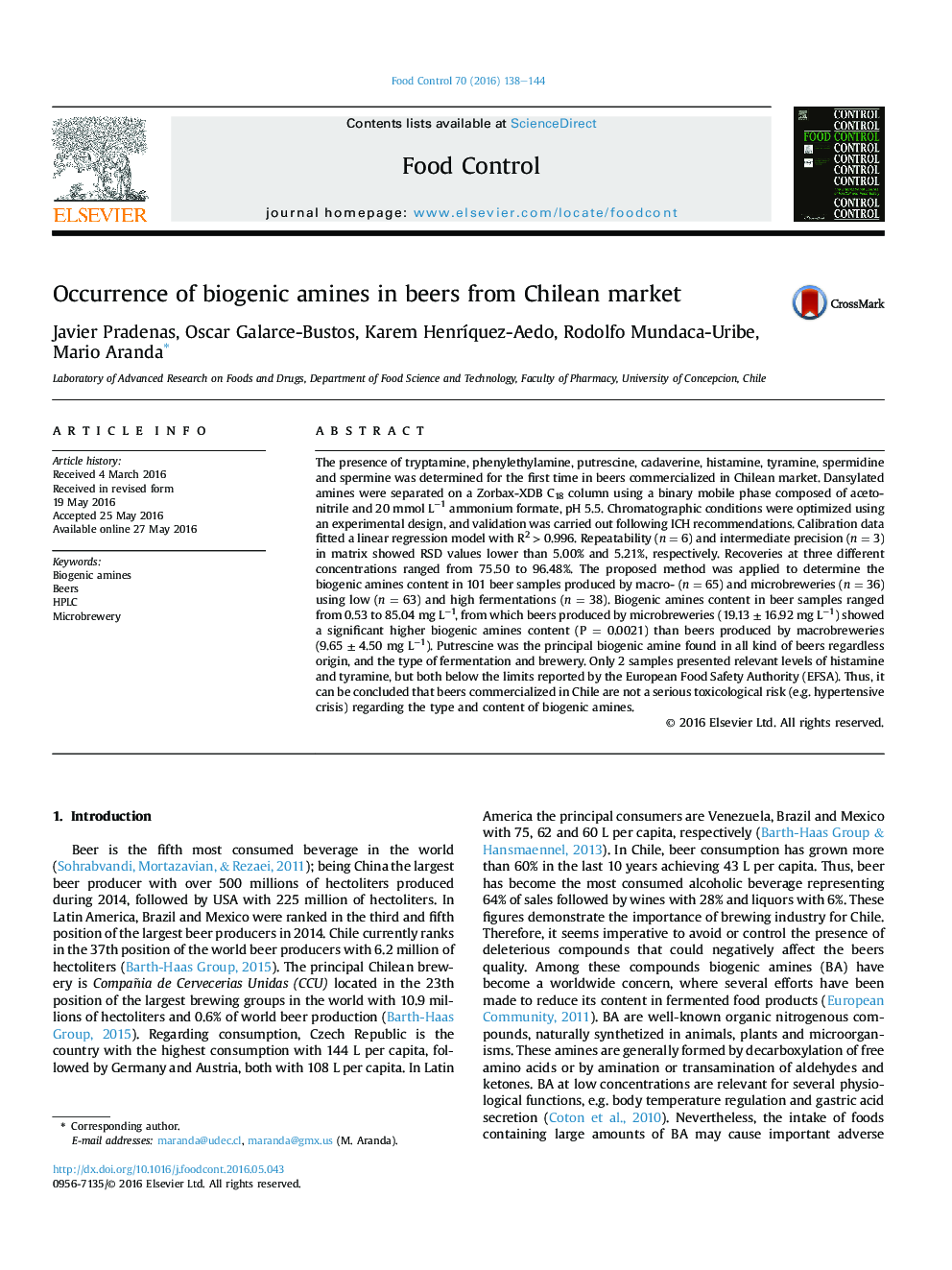| Article ID | Journal | Published Year | Pages | File Type |
|---|---|---|---|---|
| 4558980 | Food Control | 2016 | 7 Pages |
•For the first time the BA content was determined in beers commercialized in Chile.•The BA content found in 101 beer samples ranged from 0.53 to 85.04 mg L−1.•The BA content found in beers does not represent a toxicological risk.•Only 2 samples presented relevant levels of His and Tyr, but below EFSA limits.
The presence of tryptamine, phenylethylamine, putrescine, cadaverine, histamine, tyramine, spermidine and spermine was determined for the first time in beers commercialized in Chilean market. Dansylated amines were separated on a Zorbax-XDB C18 column using a binary mobile phase composed of acetonitrile and 20 mmol L−1 ammonium formate, pH 5.5. Chromatographic conditions were optimized using an experimental design, and validation was carried out following ICH recommendations. Calibration data fitted a linear regression model with R2 > 0.996. Repeatability (n = 6) and intermediate precision (n = 3) in matrix showed RSD values lower than 5.00% and 5.21%, respectively. Recoveries at three different concentrations ranged from 75.50 to 96.48%. The proposed method was applied to determine the biogenic amines content in 101 beer samples produced by macro- (n = 65) and microbreweries (n = 36) using low (n = 63) and high fermentations (n = 38). Biogenic amines content in beer samples ranged from 0.53 to 85.04 mg L−1, from which beers produced by microbreweries (19.13 ± 16.92 mg L−1) showed a significant higher biogenic amines content (P = 0.0021) than beers produced by macrobreweries (9.65 ± 4.50 mg L−1). Putrescine was the principal biogenic amine found in all kind of beers regardless origin, and the type of fermentation and brewery. Only 2 samples presented relevant levels of histamine and tyramine, but both below the limits reported by the European Food Safety Authority (EFSA). Thus, it can be concluded that beers commercialized in Chile are not a serious toxicological risk (e.g. hypertensive crisis) regarding the type and content of biogenic amines.
